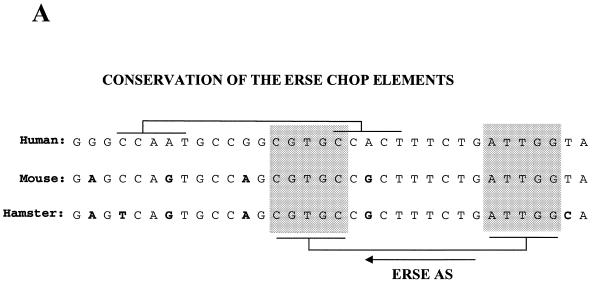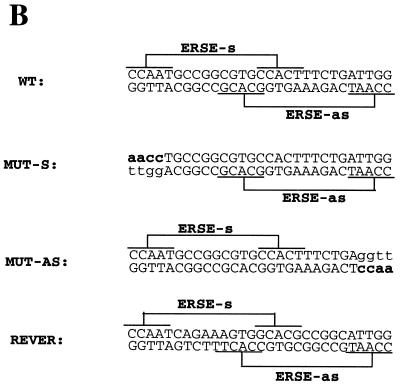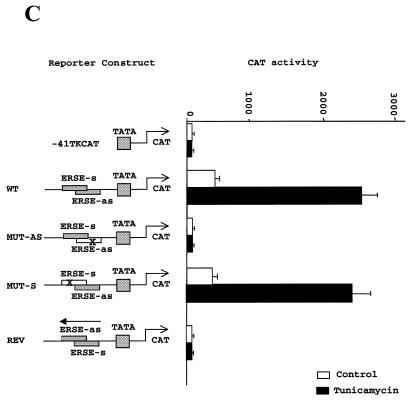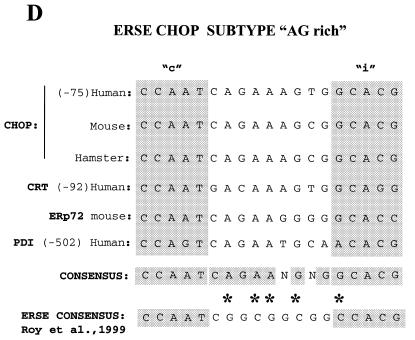Figure 4.
Of the two putative ERSE elements in the human CHOP promoter, only the one localized to the antisense DNA strand is functionally active. (A) Sequence comparison of the DNA sequences of the human, mouse and hamster promoters indicates conservation of the ERSE motif localized to the antisense DNA-strand but not of that localized to the sense strand. The human and hamster sequences were obtained from GenBank and the mouse sequence from our laboratory (39). (B) CAT reporter constructs were prepared by introducing the depicted oligonucleotides upstream of the TATA box in the –41 TK-CAT reporter. (C) Activity of the different constructs once transfected into NIH 3T3 cells. Tunicamycin treatment was as described in Figure 1. Results are expressed as the mean ± SEM of three independent experiments performed in duplicate. (D) The CHOP ERSE element belongs to a subgroup of ER-stress-inducible elements and differs from the reported consensus by having an AG- instead of a GC-rich spacer, and a G nucleotide substitution in the first position of the inducible domain. The domains required for constitutive activation ‘c’ and ER-stress inducibility ‘i’ were identified in our mutagenesis experiments (see also Fig. 5A).




